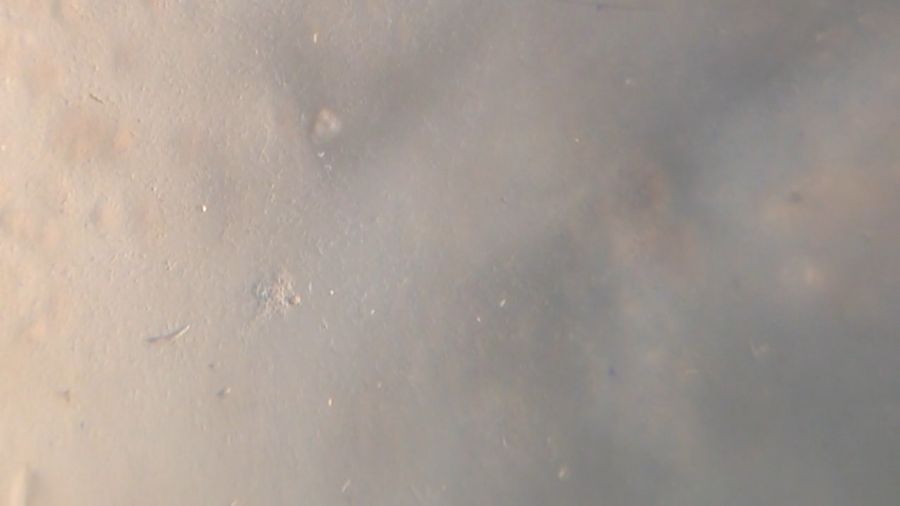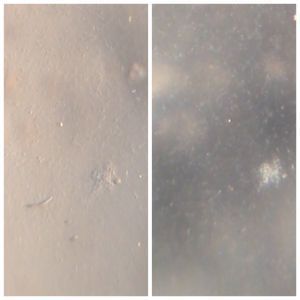Watching individual bacteria swim under a Foldscope
 May 28, 2016 • 6:52 PM UTC
May 28, 2016 • 6:52 PM UTC Unknown Location
Unknown Location 140x Magnification
140x Magnification Microorganisms
Microorganisms
Manu Prakash
I am a faculty at Stanford and run the Prakash Lab at Department of Bioengineering at Stanford University. Foldscope community is at the heart of our Frugal Science movement - and I can not tell you how proud I am of this community and grassroots movement. Find our work here: http://prakashlab.stanford.edu
266posts
1192comments
42locations

In our lives; all of us have heard of bacteria. It’s a word so commonly tossed around; all the way from “microbiome” news craze where bacteria control many aspects of our lives (and they do) to yogurt to washing our hands and brushing our teeth. We tell little kids – if you don’t wash your hands, you will get infected by unwanted bacteria..
But how many of us have seen a live bacteria ourselves. That’s where Foldscope comes in.. The value of pairing “experience” with “knowledge” allowing concepts that we just read about to become physical and real in our mindset.
Here is a tutorial to watch single bacteria swim via your Foldscope. This is an advance tutorial – and you should first replicate this post for focus locking and field of view locking before moving to imaging bacteria.
Focuslocking, field of view locking and using ambient light (table lamp) as illumination
Once you have gotten a focus locking and field of view locking working – and have a table lamp setup as a light source; it’s time to try watching bacteria swim. For this post; you must use a glass slide and thin cover slips since bacteria are small and you need the best resolution images.
Now you want to find a sample which has bacteria. Which would be almost about anything. But having bacteria in high enough density is a good place to start. Now we can get some inspiration from Leeuwenhoek (who discovered bacteria with a single lens microscope). His famous discovery of bacteria came initially from leaving “pepper” soaked in water for 3 weeks. You could essentially take any food item in your kitchen; leave it in a small bowl for a couple of weeks (it will start to smell – a great sign for bacteria in high density). I usually collect water from rotting flowers; but that’s another story.
I use “number 1” cover slips that refer to the thickness of the cover slip. Take a drop of water and put cover slip and tape sides. No need to seal it if the drop is small enough.
If you have perfected your pseudo-phase and dark field technique with a table lamp – you should see a million bacteria swimming around. The little dots you see in this video are alive and actively swimming in water. Each of them range from 1 to 10 micron; roughly 100 times smaller a than width of a human hair.
But how many of us have seen a live bacteria ourselves. That’s where Foldscope comes in.. The value of pairing “experience” with “knowledge” allowing concepts that we just read about to become physical and real in our mindset.
Here is a tutorial to watch single bacteria swim via your Foldscope. This is an advance tutorial – and you should first replicate this post for focus locking and field of view locking before moving to imaging bacteria.
Focuslocking, field of view locking and using ambient light (table lamp) as illumination
Once you have gotten a focus locking and field of view locking working – and have a table lamp setup as a light source; it’s time to try watching bacteria swim. For this post; you must use a glass slide and thin cover slips since bacteria are small and you need the best resolution images.
Now you want to find a sample which has bacteria. Which would be almost about anything. But having bacteria in high enough density is a good place to start. Now we can get some inspiration from Leeuwenhoek (who discovered bacteria with a single lens microscope). His famous discovery of bacteria came initially from leaving “pepper” soaked in water for 3 weeks. You could essentially take any food item in your kitchen; leave it in a small bowl for a couple of weeks (it will start to smell – a great sign for bacteria in high density). I usually collect water from rotting flowers; but that’s another story.
I use “number 1” cover slips that refer to the thickness of the cover slip. Take a drop of water and put cover slip and tape sides. No need to seal it if the drop is small enough.
If you have perfected your pseudo-phase and dark field technique with a table lamp – you should see a million bacteria swimming around. The little dots you see in this video are alive and actively swimming in water. Each of them range from 1 to 10 micron; roughly 100 times smaller a than width of a human hair.


Another view of darkfield setup with swimming bacteria – with 150x Foldscope.
Now, if you have perfected your focus locking technique; you can start using the 450X lens provided in Kit. I have to state, you should first get good at using a Foldscope. The high mag lens has a small back focal length; and thus focus locking is crucial to get good images. But once you have mounted your high mag lens correctly and have focus locking working – this is what you might see.
Here, I see long and elongated objects happily swimming in the fluid. An almost erratic dance is mesmerizing. Sine most bacteria are usually rod like – to spectate them would require “sequencing” techniques. Several stains can be used to differentiate broad categories of the bacteria. But what I enjoy most is love microscopy; and it’s a thrill to see them swim around.
Below, I also share videos of what the same video looks like with the illumination module provided with the kit. The contrast is higher for the “table lamp” illumination – but bacteria are clearly visible.
Below, I also share videos of what the same video looks like with the illumination module provided with the kit. The contrast is higher for the “table lamp” illumination – but bacteria are clearly visible.


So next time you have to convince a 4 year old to wash hands before eating; pull out your Foldscope and “show” them bacteria – don’t just talk about them, see them.
Cheers
Manu
Note: Post a comment once you replicate this. Would be wonderful to see many kinds of bacteria.
Note: please wash hands after working with a live bacteria culture. Who knows what growing in your kitchen.
37.7410459 -122.4397838
Cheers
Manu
Note: Post a comment once you replicate this. Would be wonderful to see many kinds of bacteria.
Note: please wash hands after working with a live bacteria culture. Who knows what growing in your kitchen.
37.7410459 -122.4397838
Sign in to commentNobody has commented yet... Share your thoughts with the author and start the discussion!

 0 Applause
0 Applause 0 Comments
0 Comments
















